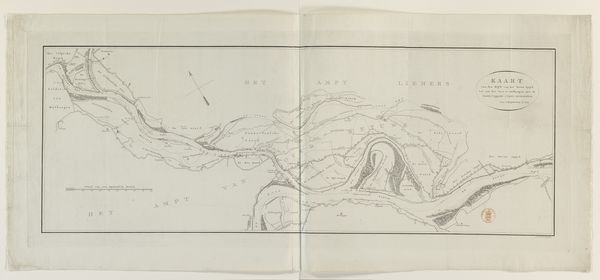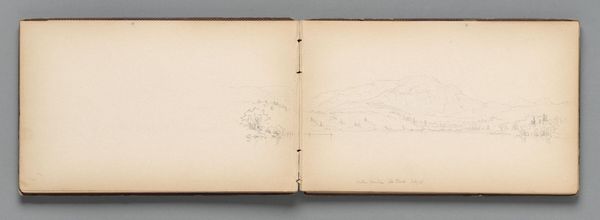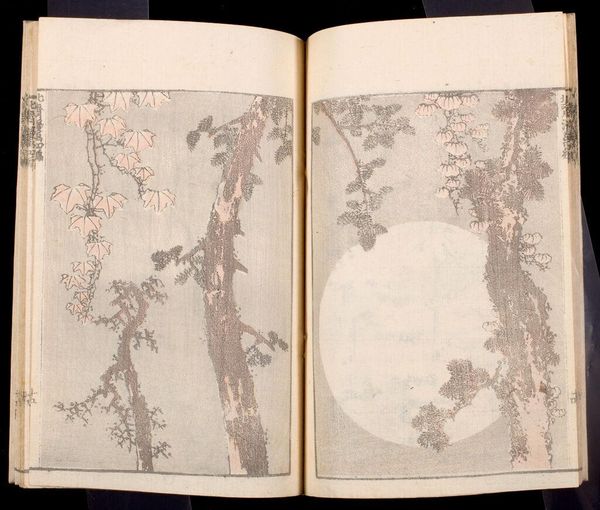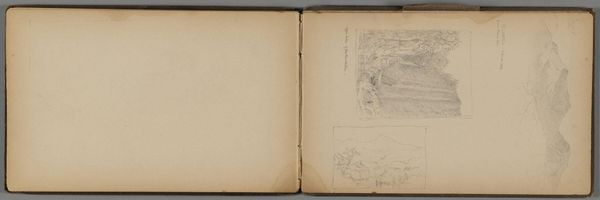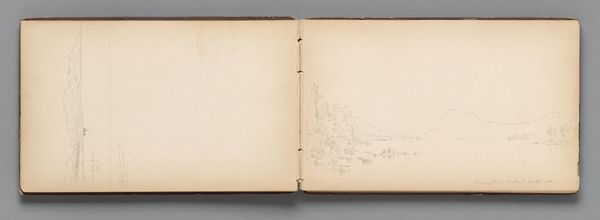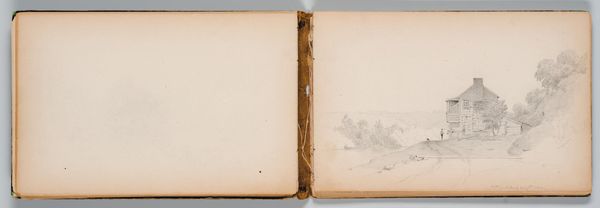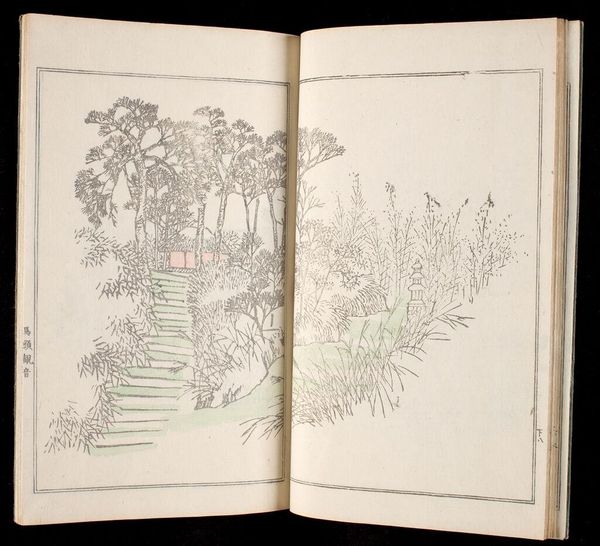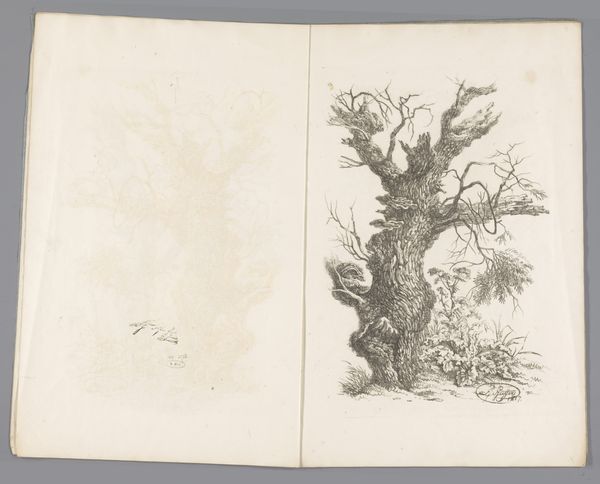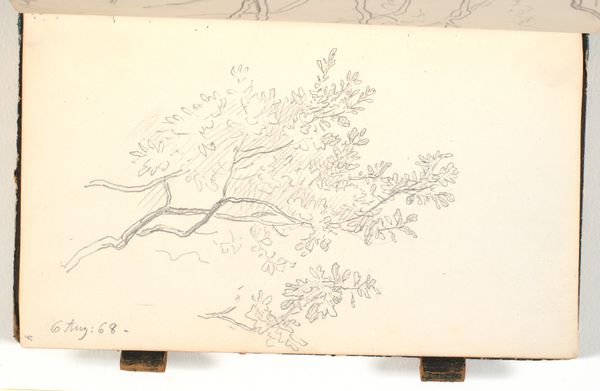
Kosode Patterns, Fuji of the Capital (Hiinagata Miyako no Fuji) 1760
0:00
0:00
drawing, graphic-art, print, textile, paper, ink
#
drawing
#
graphic-art
#
light pencil work
# print
#
book
#
asian-art
#
sketch book
#
textile
#
ukiyo-e
#
japan
#
paper
#
personal sketchbook
#
ink
#
idea generation sketch
#
sketchwork
#
visual diary
#
sketchbook drawing
#
storyboard and sketchbook work
#
fashion sketch
#
sketchbook art
Dimensions: Image: 9 5/8 × 6 7/8 in. (24.4 × 17.5 cm)
Copyright: Public Domain
Curator: This delicately rendered spread is from "Kosode Patterns, Fuji of the Capital (Hiinagata Miyako no Fuji)", an illustrated book by Omiya Sōshichi, created around 1760. Editor: The crisp lines! The compositions have a such rhythmic balance, despite the contrasting scenes displayed on each page. Curator: Exactly! The designs showcase fashionable motifs used for kimonos. Consider that this book acted as a visual directory for garment makers and their clientele. It circulated within a complex network of production, desire, and cultural expression. Editor: I can see that! Each page is subtly divided by vertical lines. And if you look closely, you notice faint annotations—possibly keyed to specific textiles. The use of blank space and the spare linework create an elegant effect. Curator: It's important to understand this wasn’t just about aesthetics. The rise of the merchant class and their increasing influence created a demand for luxury goods like fashionable clothing. The designs acted as tools for self-expression, wealth, and belonging within those rising social stratas. Editor: Notice how nature motifs are presented—on one page are these rather orderly botanical specimens and the other page a seemingly unbridled flow of water...it feels like we are peering into separate worlds. The contrast of naturalism and abstraction here is striking. Curator: And further, fashion—particularly the designs chosen by women—offered opportunities to subtly voice social status and even resist societal expectations, so it's fascinating to consider the various identities one could adopt or reflect through their choice of clothing design. Editor: So this isn't just pretty pictures then, is it? There are encoded systems at work here. This book invites careful parsing. Curator: Indeed. It reveals how design participates in complex power dynamics of a given time, specifically through gendered consumerism and a rising middle class. Editor: I am going to consider the lines more closely now! I didn't appreciate the intentionality of those initially. Thanks for shining light on how a mere garment catalog can speak to larger social shifts.
Comments
No comments
Be the first to comment and join the conversation on the ultimate creative platform.
